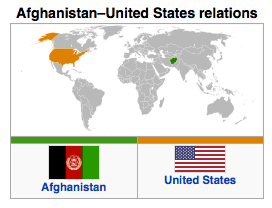The US-Afghan Strategic Partnership Agreement: Nothing More Than Symbolic – Analysis
By IPCS
By Aryaman Bhatnagar
Barack Obama’s recent surprise visit to Kabul was marked by the signing of the Strategic Partnership Agreement (SPA) between the US and Afghanistan. The pact commits the US to provide long-term assistance – military and financial – to Afghanistan, even after the bulk of the coalition forces withdraw from the country in 2014.
Shaida M Abdali, the Deputy National Security Advisor to President Hamid Karzai, in an article for Foreign Policy, claimed that Afghanistan could now realistically expect to achieve stability in the region based on ‘credible, long-term international commitments’. However, the optimism surrounding the pact may be slightly premature as a number of crucial details have either not been finalized or been kept out of the purview of the pact.

For starters, the ‘commitment’ of the US has not been specified. The pact requires the US to provide assistance in developing the Afghan economy and public institutions for another decade without committing to specific funding levels. But, at the same time, it would be wrong to assume that the US is capable of maintaining high levels of financial assistance to Afghanistan for another decade. The increasing unpopularity of the war in the US – as indicated by recent surveys – and the growing financial crisis may not hinder American resolve to stay on in Afghanistan, but it is likely to undermine the magnitude of support that the US can provide to Afghanistan. Moreover, the fact that the US Congress is required to annually authorize the funding, it essentially holds funding hostage to public opinion and domestic politics as opposed to need and strategic necessity.
Evidence of substantial curtailment of US spending in Afghanistan in the long-run – for both development and security – is already noticeable. For instance, the budget for the development agency USAid has already been slashed by half as compared to its budget in 2010 and is likely to face further tightening by Congress. Similarly, the NATO budget for funding Afghan security forces has also been reduced by about two thirds. From a budget of USD 11.2 billion for 2012, it was recently announced that post-2014, the US and its allies would be able to pay only USD 4.1 billion annually.
Such budgetary constraints are likely to have an impact on the plans to develop both civil society and governmental capacities to fill the vacuum post-2014 and ultimately enable Afghanistan to achieve self-sufficiency. Similarly, it would also impact the quality and quantity of military training the US is required to provide. It may end up imposing significant quantitative and qualitative restrictions on the size and equipment of Afghan National Security Forces (ANSF) while saddling them with vastly greater responsibilities.
Apart from problems with the financial clauses, the pact does not commit the US to any specific troop levels either. More importantly, aside from providing training to the ANSF, the role US troops would play in counter-insurgency operations post-2014 has been kept out of the purview of the pact. This is to be decided at a later date through separate agreements. However, it is unlikely that US troops would play a significant role in counter-insurgency operations. They have already ceded operational command of night raids – considered an extremely effective counter-insurgency tool by the US – and the Bagram prison to the ANSF. These were significant concessions by the US against the backdrop of rising anti-Americanism, which had tilted the balance at the negotiating table in favour of Karzai. It is thus possible that the US may be forced to make further concessions, which along with the shortcomings of the ANSF and their inability to manage on their own, may undermine the tactical integrity of future counter-insurgency efforts.
The SPA’s significance, for now, lies more in its symbolic value. It can dispel the concerns of Afghans who feared abandonment from the US come 2014, and restore their faith in the endurance of US-Afghan relations. However, the pact, at present, is even more important for President Obama. Given the accusations of lack of clarity and direction in his Afghan policy, Obama would want to head into the US Presidential elections in November having quelled the notion that he is bungling America’s future role in Afghanistan. The timing of the pact certainly seems to indicate that this was a significant motivating factor. Signed just days before the kick-off his re-election campaign and on the eve of the first death anniversary of Osama bin Laden, President Obama would like to send out a strong message as to how the West is ‘winning’ the war on terror.
Aryaman Bhatnagar
Research Officer, IPCS
email: [email protected]
